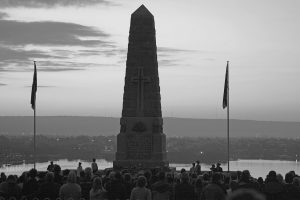SYDNEY (AFP) — Cooler conditions helped firefighters battling blazes across Australia but up to 30 were still out of control, destroying a handful of homes and killing thousands of livestock.
After facing one of the highest-risk fire days in its history on Tuesday, residents in hard-hit New South Wales state woke to shifting winds that caused temperatures to drop significantly.
While the mercury topped 42 degrees Celsius (107.6 F) in Sydney on Tuesday, it was forecast to peak at just 25 degrees Wednesday, while the Victorian capital Melbourne was down to 20.
The ratings on many bushfires were downgraded with none now at the “catastrophic” level which signifies fires will be uncontrollable, unpredictable and fast-moving, and evacuation the only safe option.
But NSW Rural Fire Service commissioner Shane Fitzsimmons warned against complacency, with new fronts breaking out despite the colder weather and a total fire ban still in place.
“It is far from over when it comes to the threat to New South Wales,” he told reporters in Bookham, a small village in Yass Shire west of Canberra where a fire has so far burnt out 16,000 hectares (40,000 acres).
“We need to sustain the vigilance today. We are not out of the woods yet, the risk is very real and there’s a long day ahead and a forecast for a return to hot conditions toward the weekend and into next week.”
More than 2,000 firefighters worked through the night tackling more than 140 blazes across New South Wales, Australia’s most populous state, with 30 of those uncontained.
One home was earlier believed to have been lost in the state, at Jugiong, but Fitzsimmons said it now appeared to be an outbuilding or shed.
“It’s a tribute to firefighters across the state that we haven’t got any homes destroyed,” he said.
“But we’ve seen significant agricultural losses already been tallied up, thousands of hectares of pasture and crops, and stock in the thousands lost.”
New South Wales Premier Barry O’Farrell said an estimated 10,000 sheep had perished in the Yass area alone.
Wildfires are a fact of life in arid Australia, where 173 people perished in the 2009 Black Saturday firestorm, the nation’s worst natural disaster of modern times.
Most are ignited naturally, but in Sydney’s west three teenage boys were charged with deliberately lighting a fire in bushland on Tuesday.
Victoria state has also been experiencing extreme conditions with four homes destroyed and six people treated for minor burns or smoke inhalation in a bushfire in the farming community of Carngham, which was evacuated.
Authorities said the fire was now under control.
Prime Minister Julia Gillard said the federal and state governments were working together in the recovery effort and to support victims.
“Firstly, it’s all hands on deck fighting the fires, dealing with the emergency, and then we move into the recovery phase,” she said.
No deaths have so far been reported.
While it was initially believed as many as 100 people could be missing in the southern island of Tasmania after wildfires razed more than 100 homes over the weekend, police said there was confusion about movements during the crisis.
“We know there have been no significant injuries, which is amazing, and we are encouraged that we haven’t found any human remains at this stage,” Tasmanian acting police commissioner Scott Tilyard told Sky News.
Much of southern Australia has been enduring a summer heatwave and in the nation’s arid centre the popular tourist resort of Kings Canyon south of Alice Springs was damaged after a blaze spread from the Watarrka National Park.
Courtesy: Martin Parry AFP 2013




